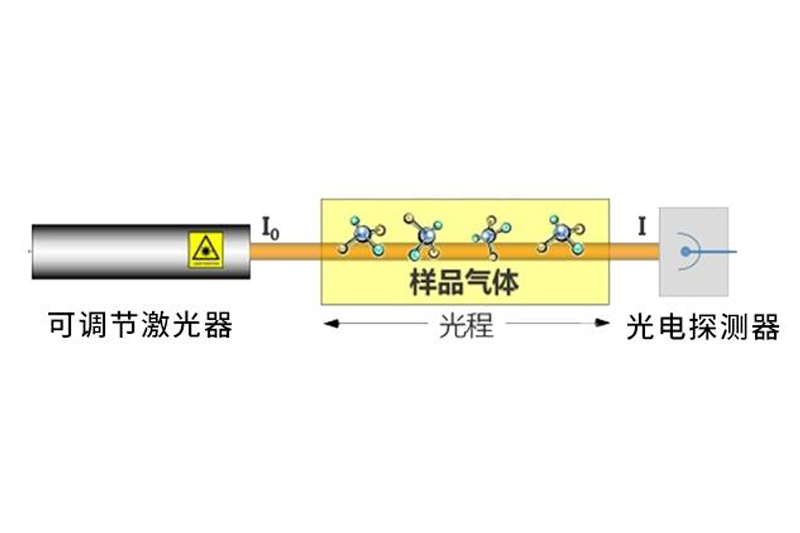-
Telephone:400-000-0000Telephone:400-000-0000
-
wechat:abcdefg
-
Email:sales@ahxsgd.com

Tunable semiconductor laser absorption spectroscopy (TDLAS) is a technique that uses the wavelength tuning characteristics of semiconductor lasers and the selective absorption of laser light by the gas to be measured to detect gas concentration. It has the advantages of high sensitivity, real-time, dynamic, and simultaneous measurement of multiple components. The principle is that the tunable semiconductor laser emits laser light of a specific wavelength under the modulation of the driving current. With the modulation of the injected periodic current, the laser wavelength changes periodically, so that the center wavelength of the laser is adjusted to the absorption line of the gas to be measured. Selective absorption occurs, and then the spectral intensity signal obtained through gas absorption is used to invert the concentration of the gas to be measured. Because of the high monochromaticity of the semiconductor laser, an isolated absorption line of the gas molecule to be measured can be used for measurement, avoiding cross interference between the spectra of different molecules, thereby accurately identifying the gas to be measured.
TDLAS measures the number of molecules passed through the gas channel under test by the laser, and the obtained gas concentration is the average concentration of the entire channel. The quantitative calculation of gas concentration in TDLAS is based on Beer-Lambert's law, which points out the relationship between light absorption and light passing through the substance to be detected. When a beam of light with frequency V passes through the absorbing substance, the light intensity of the beam passes through the gas to be measured changes as follows:
I(v)=I0(v)exp[-σ(v)CL]
I(v): The transmitted light intensity of the light beam passing through the gas to be measured
I0 (v): Incident light intensity
σ(v): Absorption cross-section of the measured gas molecule
C: Concentration of measured gas
L: optical distance
Therefore, the concentration of a gas can be measured by measuring the attenuation of the gas to the laser.

1. Highly selective, high-resolution spectroscopy technology, due to the "fingerprint" characteristics of the molecular spectrum, it is not interfered by other gases. This feature has obvious advantages over other methods.
2. It is a universal technology that is effective for all active molecules that absorb in the infrared. The same instrument can be easily changed to an instrument for measuring other components, just changing the laser and standard gas. Because of this feature, it can be easily changed into an instrument that measures multiple components simultaneously.
3. It has the advantages of high speed and high sensitivity. Without losing sensitivity, its time resolution can be on the order of ms. The main fields of application of this technology include: molecular spectroscopy research, industrial process monitoring and control, combustion process diagnostic analysis, engine efficiency and motor vehicle exhaust measurement, explosion detection, monitoring of trace pollutant gases in the atmosphere, etc.

